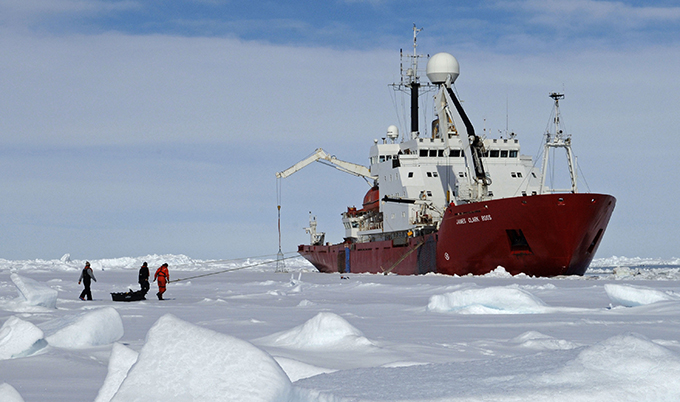Larson C
Mission to explore hidden Antarctic ecosystem
Published on: 9 October 2017
A team of scientists is planning an urgent mission to investigate a mysterious marine ecosystem that’s been hidden beneath an Antarctic ice shelf for up to 120,000 years.
Led by British Antarctic Survey (BAS) and involving researchers from Newcastle University, the aim is to discover how this marine ecosystem will respond to environmental change in a climate-sensitive region.
The massive calving of the Larsen C Ice Shelf A68 iceberg, which is four times the size of London, exposes around 5,818 km2 of seabed.
The research team is planning a ship-borne research cruise to the region before the biological communities there begin to change following the movement of the giant iceberg. However, they can only achieve this if the iceberg continues on its path away from the remaining ice shelf.
Satellite monitoring will reveal options for navigating through the sea ice. All being well the team will spend three weeks in February 2018 on board the BAS research ship RRS James Clark Ross.

Race against time
Dr Will Reid, from Newcastle University, will be part of the scientific mission heading to the Antarctic and will lead the research examining the food web.
“What we have are animals that have been living in food limited conditions under the ice for 120,000 years suddenly being exposed to a large amount of food," he explains.
"This will lead to a huge shift in environmental conditions which these animals have never experienced before and is likely to have implications for how carbon is drawn down from the atmosphere and locked away through the increased growth of animals living on the seafloor and water column.
“It is imperative that we reach this location before the area changes too much so that we can understand how animals living on the seafloor respond to the environmental impact of climate change.”
Marine biologist Dr Katrin Linse from British Antarctic Survey is leading the mission. She adds:
“We have a unique opportunity to study how marine life responds to a dramatic environmental change. Normally, it takes years to plan the logistics for marine research cruises. Our funder, NERC and our ship operations team recognise the urgency to act quickly. Everyone is pulling out the stops to make this happen. All we need now is for the iceberg to move far enough away from the remaining shelf and the sea ice to melt so that we can navigate safely.
“It’s exciting to think about what we might find. Using a range of different techniques, our multi-disciplinary approach by an international team, will examine the marine ecosystem spanning the water column from the surface of the ocean all the way to the seabed and the sediment.”
Unprecedented opportunity
This newly exposed marine area is the first to activate an international agreement made in 2016 by the Commission for the Conservation of Antarctic Marine Living Resources (CCAMLR). This agreement designates Special Areas for Scientific Study in newly-exposed marine areas following the collapse or retreat of ice shelves across the Antarctic. The agreement came following a European Union proposal to CCAMLR, led by British Antarctic Survey (BAS) scientists.
Dr Phil Trathan, Head of Conservation Biology at BAS was part of the UK Delegation to CCAMLR and is part of the research expedition team. He said:
“The calving of A68 offers a new and unprecedented opportunity to establish a scientific programme to address questions focussed on the mobility and colonisation capacity of benthic marine species. We hope that we’ll be able to answer fundamental questions relating to the sustainability of polar continental shelves under climate change, including potentially the processes by which benthic populations migrate, the extent to which benthic organisms act as a biological carbon sink, and the degree to which the distribution of marine benthos can be used to interpret past responses to climate change in various systems.
“It’s important we get there quickly so we can make a baseline assessment before the newly exposed marine environment changes and new species begin to colonise the area.”




